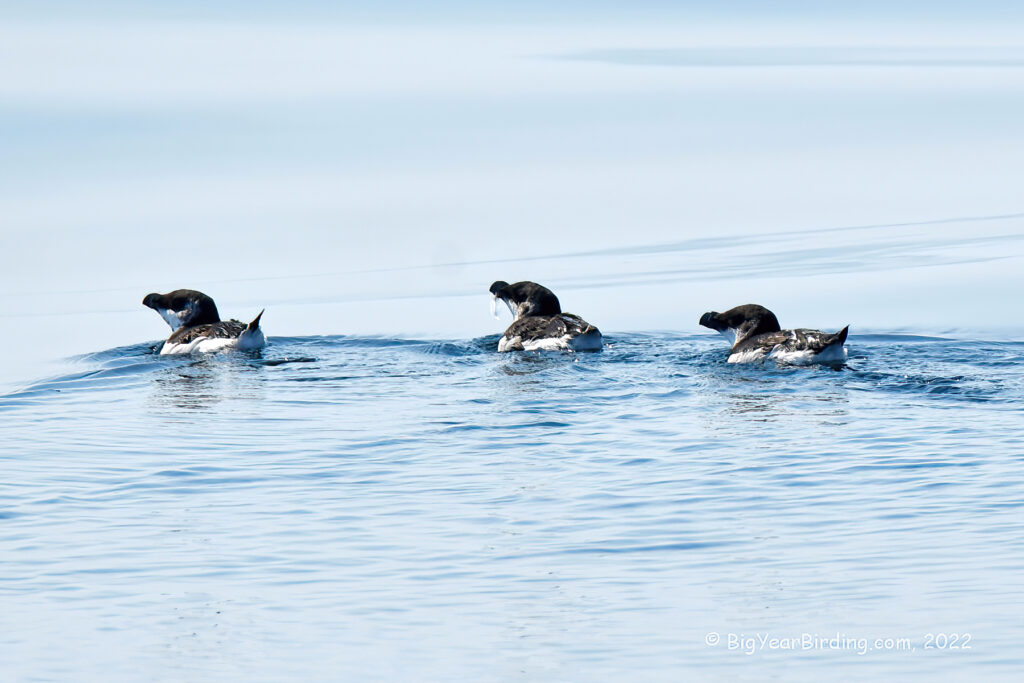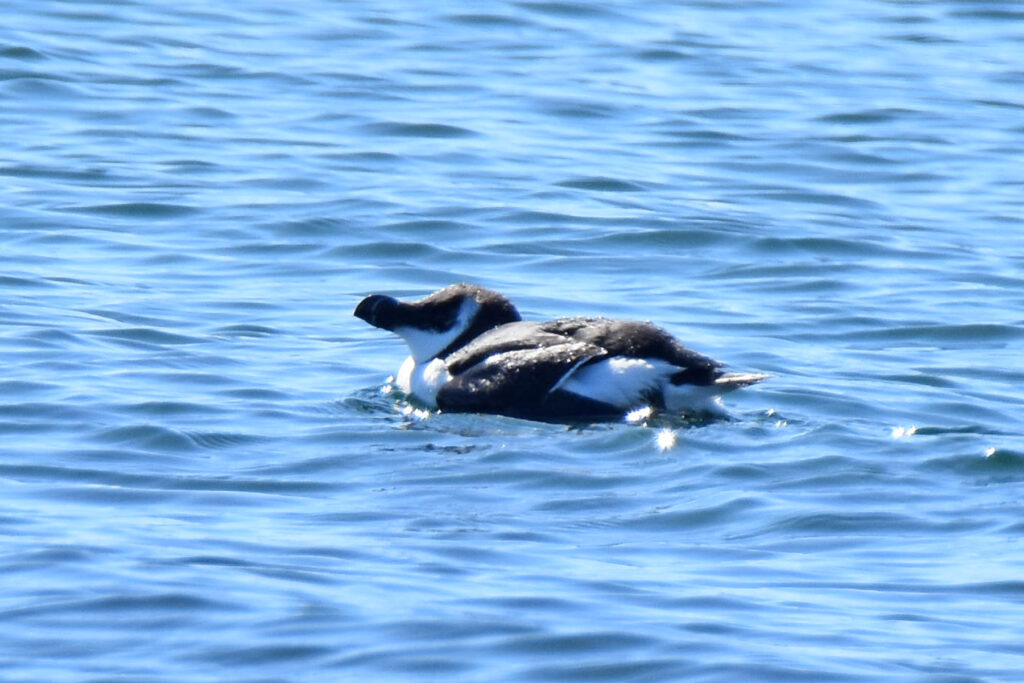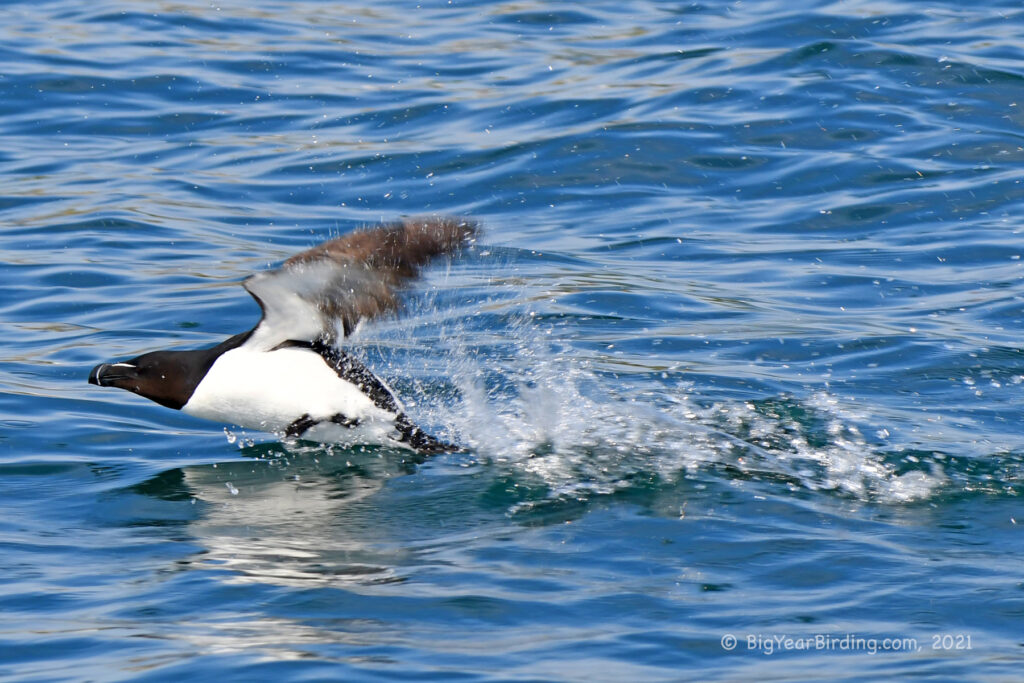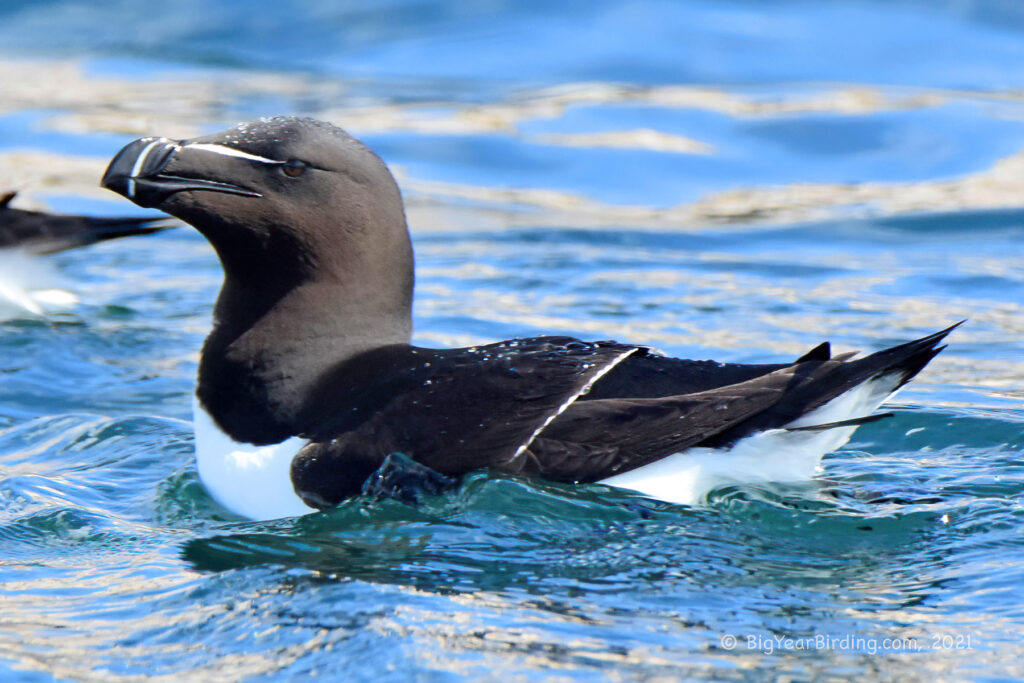The Razorbill is a seabird species that belongs to the family Alcidae, along with puffins and murres. These birds are about 16 inches long and weigh around 1.2 pounds, making them larger than puffins but smaller than murres. They have a distinctive black and white plumage, with a black head, back, wings, and tail, and a white belly. Their short, thick bill is black with a white line on the upper mandible.

One of the Razorbill’s most distinguishing field marks is its short, thick, and straight bill. This feature helps them catch their prey, which consists mainly of small fish, squid, and crustaceans. They can dive up to 300 feet deep and hold their breath for up to a minute while searching for food. During the breeding season, Razorbills develop a white line on the edges of their bill, which fades after the season is over.
Razorbills are mainly found in the North Atlantic, breeding on rocky cliffs and islands from Maine to Greenland, Iceland, Norway, and the United Kingdom. During the winter, they migrate south and can be found as far south as North Carolina. They travel long distances to find food and often form large flocks during migration.
Razorbills are monogamous and form long-term pair bonds during the breeding season. They lay a single egg, which both parents take turns incubating for about 35 days. After hatching, the chick is fed by both parents and is ready to fledge after about 30 days. Razorbills can live up to 20 years in the wild, but many individuals die before reaching adulthood due to predation, disease, or harsh weather conditions.

In recent years, the Razorbill population has been declining due to several factors, including habitat loss, overfishing, and pollution. Conservation efforts are underway to protect their breeding sites, reduce fishing pressure, and minimize the impact of human activities on their habitat. Despite these challenges, the Razorbill remains a remarkable and unique species, and its conservation is crucial to maintaining the biodiversity and health of our oceans.


